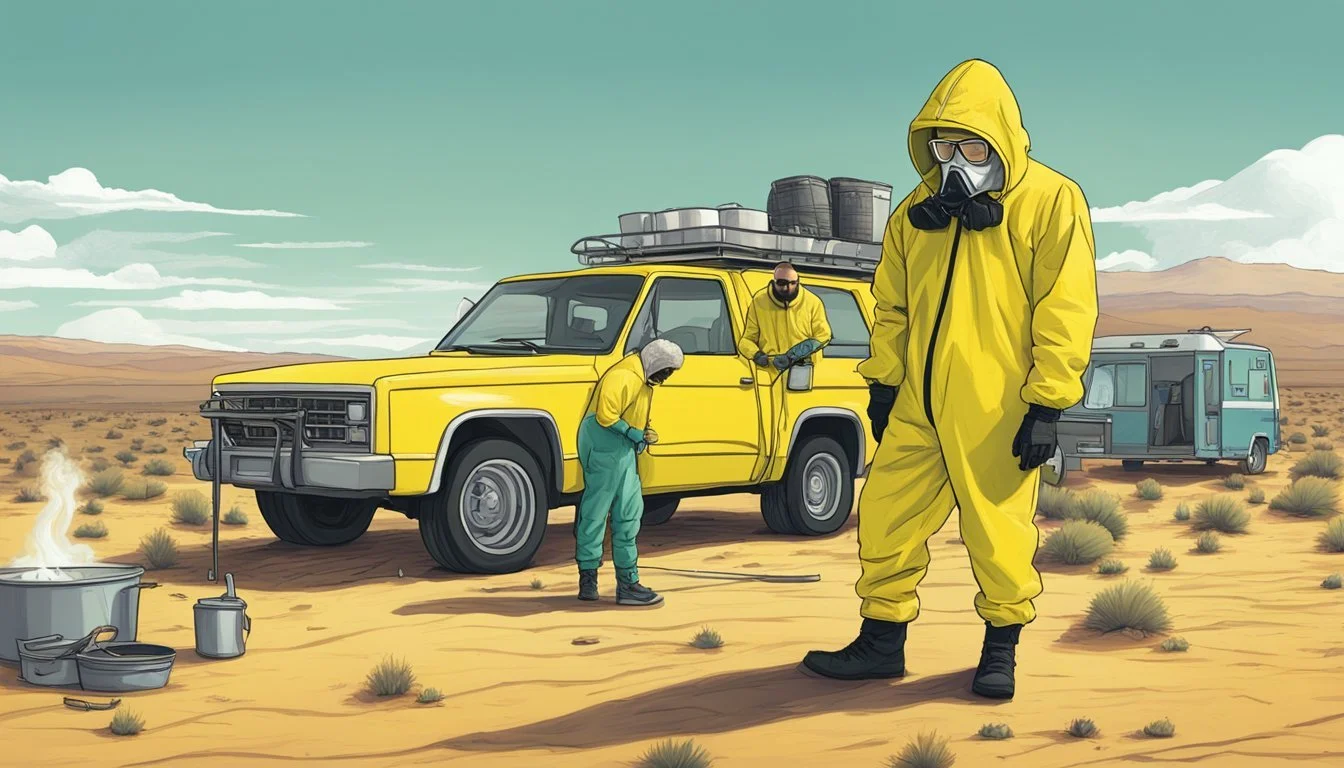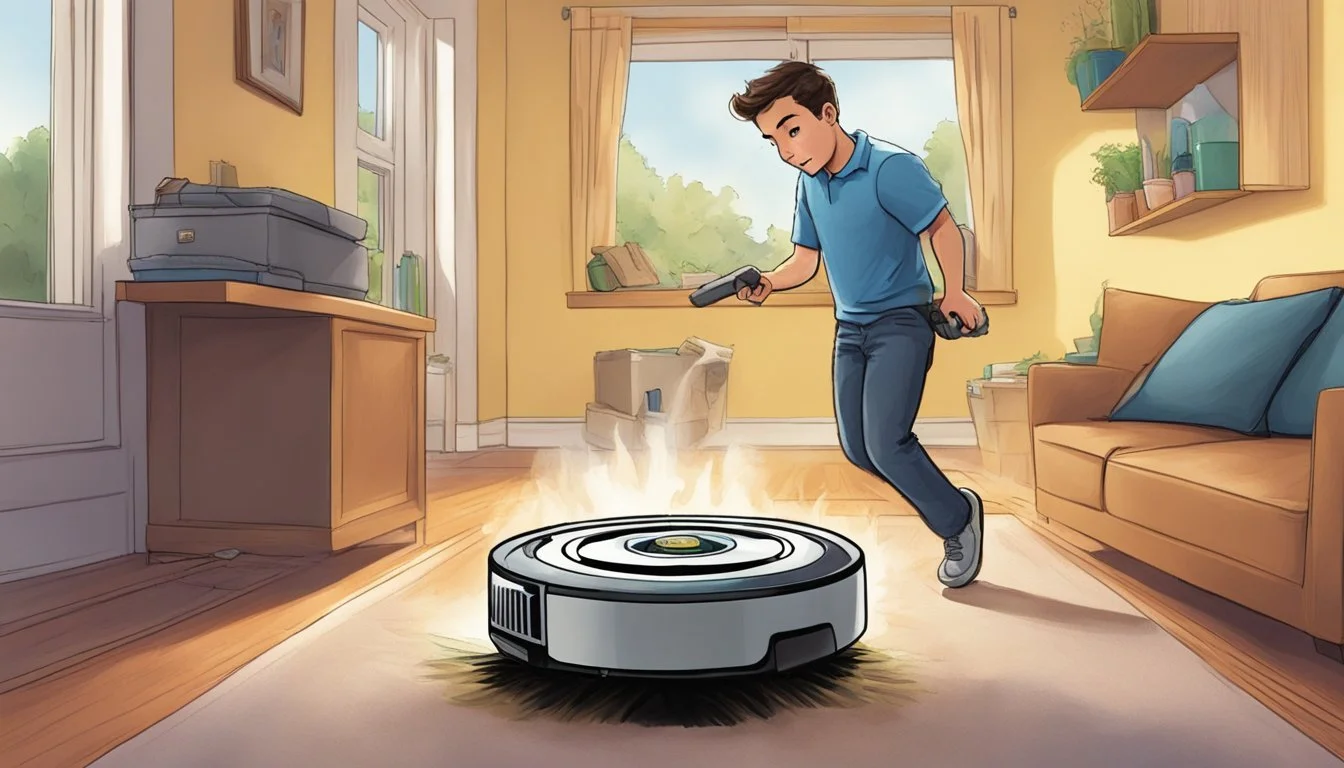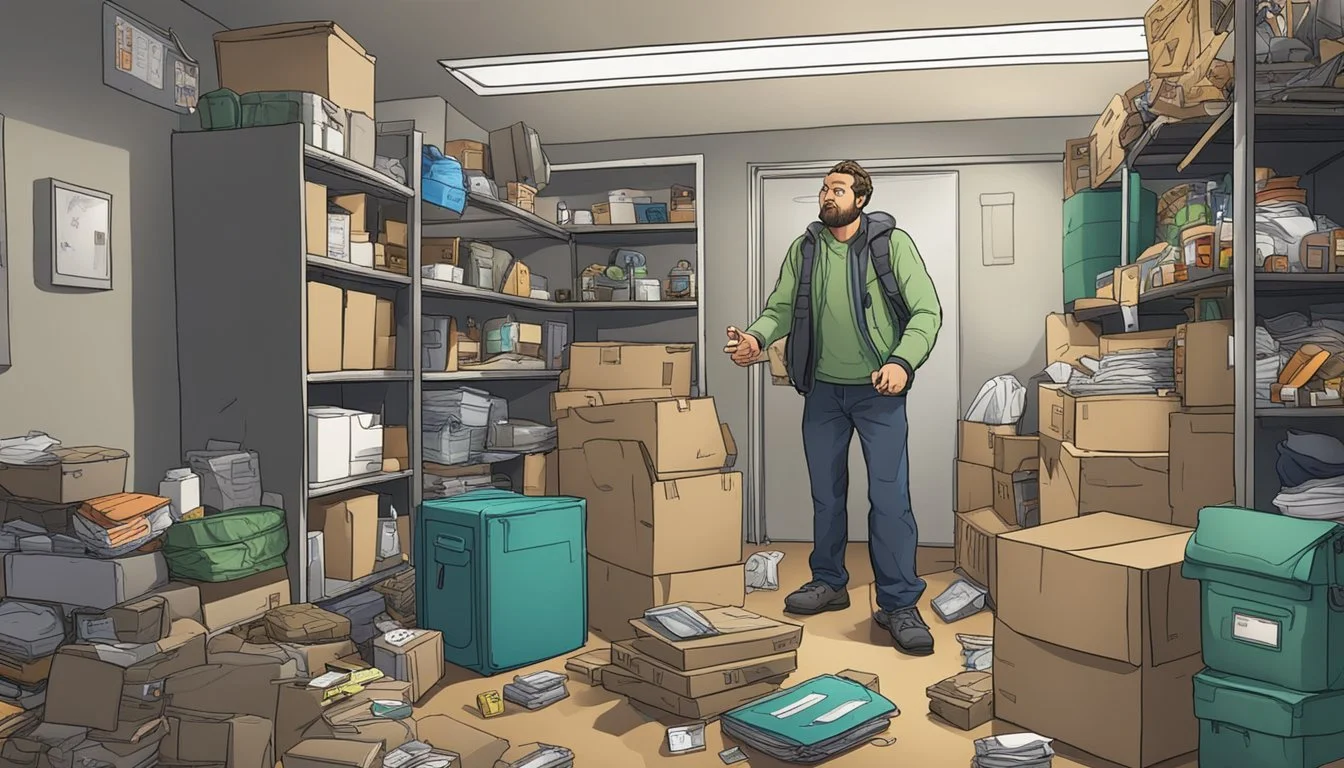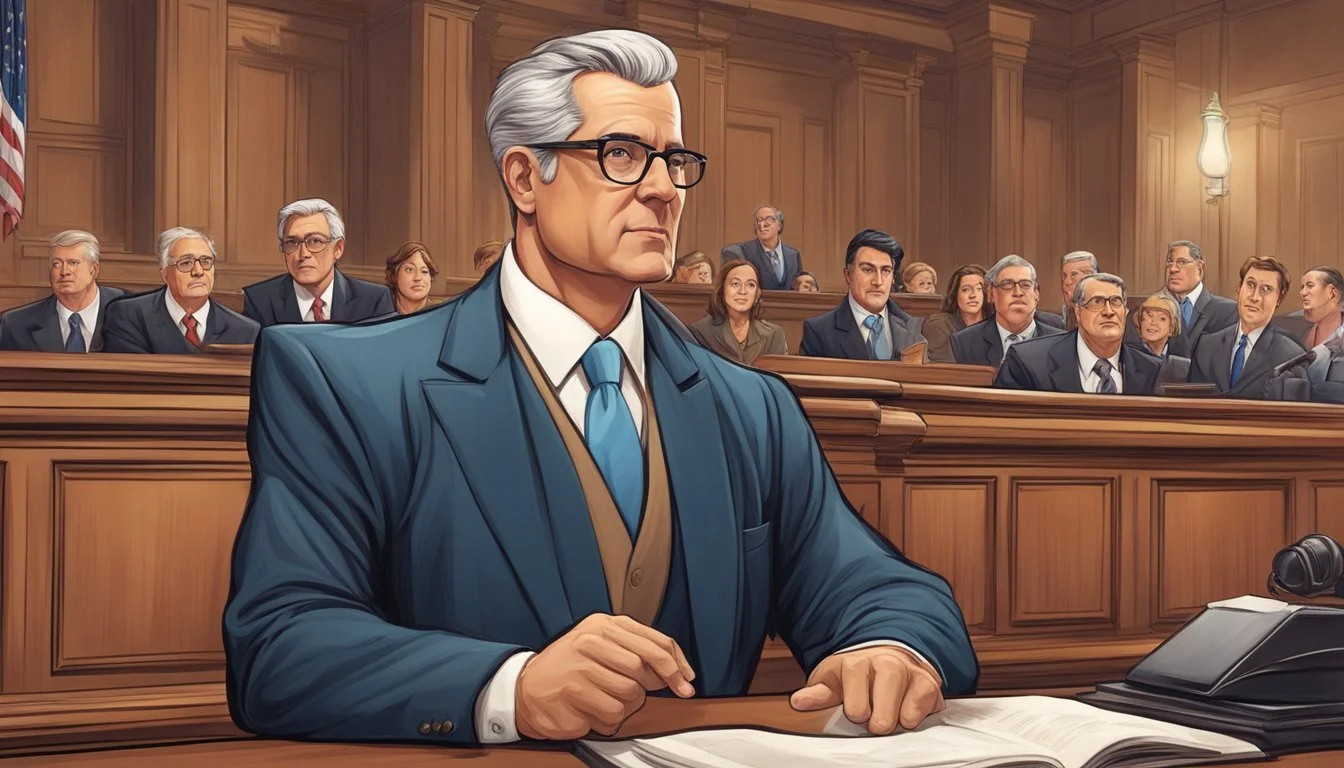7 Breaking Bad Episodes That Perfectly Balanced Comedy and Drama
A Masterclass in Tonal Equilibrium
Breaking Bad captivated audiences with its gripping storylines and complex characters during its five-season run. The show's ability to seamlessly blend intense drama with dark humor set it apart from other television series of its time.
Breaking Bad's unique mix of comedy and drama helped create some of the most memorable and critically acclaimed episodes in television history. While known primarily for its dramatic elements, the show's comedic moments provided necessary levity and showcased the versatility of its talented cast. This article explores seven standout episodes that exemplify Breaking Bad's mastery of tonal balance.
1) 'I.F.T.' - Skyler's breakfast confession was darkly comedic
The Breaking Bad episode "I.F.T." masterfully blends dark comedy with intense drama. Skyler's breakfast confession to Walt stands out as a pivotal moment that exemplifies this balance.
After Walt's persistent attempts to reconcile, Skyler delivers a shocking revelation over the most important meal of the day. She calmly informs him that she slept with her boss, Ted Beneke.
The timing and setting of this confession create an uncomfortable atmosphere. Walt's stunned reaction contrasts sharply with the mundane act of eating breakfast, adding a layer of absurd humor to the scene.
This moment encapsulates the show's ability to find comedy in the darkest situations. Skyler's matter-of-fact delivery and Walt's speechless response highlight the dysfunctional nature of their relationship.
The scene's impact is heightened by the buildup of tension throughout the episode. Skyler's confession serves as both a dramatic turning point and a darkly humorous release valve for the audience.
2) 'One Minute' - Hank's parking lot panic fused tension and humor
"One Minute" masterfully blended suspense and levity in a pivotal scene featuring Hank Schrader. The DEA agent found himself in a tense situation while sitting in his SUV in a parking lot.
Hank received a chilling phone call from an electronically-disguised voice, warning him of an impending attack. The scene built palpable tension as Hank scanned his surroundings, visibly on edge.
Despite the gravity of the situation, the episode injected a touch of humor. Hank's frustration with his forgotten jerky and his attempts to reach for it provided a brief moment of comic relief.
This scene exemplified Breaking Bad's ability to balance high-stakes drama with subtle humor. It showcased Hank's vulnerability while maintaining his characteristically gruff demeanor.
The parking lot sequence set the stage for a thrilling confrontation, demonstrating how the show could seamlessly transition from moments of levity to intense action. It remains a standout example of the series' nuanced storytelling approach.
3) 'Fly' - Walter White and Jesse Pinkman's bottle episode antics
'Fly' stands out as a unique episode in Breaking Bad's third season. Set almost entirely within the meth lab, it focuses on Walter White's obsessive pursuit of a fly contaminating their workspace.
The episode showcases the complex dynamic between Walt and Jesse as they spend hours trying to catch the elusive insect. Their interactions range from tense to humorous, revealing deeper aspects of their characters and relationship.
Walt's fixation on the fly symbolizes his increasing loss of control and paranoia. Jesse's attempts to reason with Walt highlight the shifting power dynamics between them.
Despite its confined setting, 'Fly' manages to blend comedy and drama effectively. The absurdity of their situation provides moments of levity, while underlying tensions create dramatic weight.
The episode's minimalist approach allows for intimate character exploration. It delves into Walt's guilt and Jesse's growing concerns about their partnership.
While divisive among fans, 'Fly' demonstrates Breaking Bad's ability to create compelling storytelling within constraints. It showcases the show's talent for balancing humor and drama even in unconventional scenarios.
4) 'Over' - Walter's pool breakdown was both absurd and intense
The episode "Over" features a memorable scene where Walter White's behavior spirals out of control at a family pool party. As tensions rise, Walt becomes increasingly aggressive and confrontational with his brother-in-law Hank.
Walt's insistence on pouring more tequila for his teenage son, despite protests from others, creates an uncomfortable atmosphere. His actions become both absurd and alarming as he refuses to back down, pushing the situation to its limits.
The scene reaches its climax when Walt Jr., unable to handle the alcohol, vomits into the pool. This moment serves as a stark contrast to Walt's bravado, instantly deflating the tension and highlighting the absurdity of his actions.
Through this scene, the show masterfully balances comedy and drama. Walt's exaggerated behavior and the resulting chaos provide dark humor, while the underlying family conflict adds emotional weight to the situation.
The pool breakdown effectively showcases Walt's deteriorating mental state and his growing alienation from his family. It serves as a pivotal moment in his character development, revealing the extent to which his newfound power has affected his judgment and relationships.
5) 'Problem Dog' - Jesse shoots Roomba in a hilariously sad moment
In the Breaking Bad episode "Problem Dog," Jesse Pinkman's inner turmoil manifests in an unexpectedly comical yet poignant scene. Struggling with guilt over recent events, Jesse becomes fixated on a Roomba vacuum cleaner in his living room.
The robotic device's repetitive movements and persistence irritate Jesse's already frayed nerves. In a moment of frustration, he grabs his gun and shoots the Roomba, effectively "killing" the harmless cleaning robot.
This brief sequence encapsulates Jesse's emotional state perfectly. The absurdity of shooting an inanimate object brings a touch of dark humor to the scene. Yet it also reveals Jesse's deep-seated pain and inability to cope with his actions.
The moment serves as a microcosm of Breaking Bad's ability to blend comedy and drama seamlessly. It offers viewers a momentary laugh while simultaneously highlighting the character's deteriorating mental state.
6) 'End Times' - Saul's manic panic room preparation
In the penultimate episode of Breaking Bad's fourth season, "End Times," Saul Goodman's paranoia reaches new heights. As tensions escalate between Walt and Gus, Saul takes drastic measures to ensure his own safety.
The typically composed lawyer transforms his office into a makeshift panic room. Saul's frantic preparations provide a moment of dark comedy amidst the escalating danger. He frantically gathers supplies and fortifies his space, convinced that his association with Walt has put him in the crosshairs.
Saul's exaggerated response to the threat showcases Bob Odenkirk's comedic talent. His panicked expressions and rapid-fire dialogue inject levity into an otherwise tense episode. This scene exemplifies Breaking Bad's ability to balance humor with high-stakes drama.
The contrast between Saul's manic behavior and the genuine peril facing the other characters creates a compelling dynamic. His overreaction serves as a brief respite from the intense confrontations unfolding elsewhere in the episode.
7) 'Better Call Saul' - Introducing Saul Goodman with wit and flair
The episode "Better Call Saul" marks a pivotal moment in Breaking Bad, introducing the charismatic lawyer Saul Goodman. Bob Odenkirk's debut as the fast-talking attorney brings a new dynamic to the series.
Saul's entrance is memorable, as he swoops in to help Badger, one of Jesse's friends caught in a drug bust. His quick wit and unorthodox methods immediately set him apart from other characters.
The episode skillfully balances humor with the show's darker themes. Saul's colorful personality and questionable ethics provide comic relief while highlighting the increasingly complex world Walt and Jesse navigate.
Odenkirk's performance is a standout, blending comedy and drama seamlessly. His portrayal of Saul as both a competent lawyer and a morally flexible individual adds depth to the character.
This episode not only enhances the main plot but also lays the groundwork for Saul's own spinoff series. It demonstrates the show's ability to introduce compelling characters that can carry their own narratives.
Balancing Humor with Tension
Breaking Bad masterfully blended dark comedy with intense drama. The show's creators used humor strategically to provide relief from tense moments and highlight character relationships.
The Art of Comic Relief
Breaking Bad employed comic relief to break up heavy storylines. Moments of levity often came unexpectedly, catching viewers off guard. For example, Walt's infamous "pizza on the roof" scene provided a humorous break from the mounting tensions in his home life.
The writers carefully timed comedic moments to maximize impact. A well-placed joke or visual gag could diffuse anxiety before ramping up suspense again. This technique kept audiences engaged through emotional highs and lows.
Vince Gilligan and the writing team crafted humor that felt organic to the characters and situations. They avoided forced jokes, instead finding comedy in the absurdity of the premise and character reactions.
Character Dynamics as a Source of Comedy
Many of Breaking Bad's funniest moments stemmed from character interactions. The contrast between Walt's serious demeanor and Jesse's laid-back attitude created natural comedic friction.
Supporting characters like Saul Goodman and Badger injected humor through their personalities and dialogue. Saul's outlandish legal advice and Badger's stoner antics provided consistent laughs.
Even intense characters like Mike had dry, deadpan moments that lightened the mood. His exasperation with Walt and Jesse's antics often led to witty one-liners.
The show's ability to find humor in dark situations showcased its nuanced approach to storytelling. By balancing comedy with drama, Breaking Bad created a more realistic and emotionally resonant viewing experience.
Impact of Comedy on Storytelling
Breaking Bad's strategic use of humor amidst intense storylines created a captivating viewing experience. The show's dark comedy elements enhanced character development and viewer engagement in meaningful ways.
Enhancing Character Development
Comedy in Breaking Bad served as a tool for deepening character portrayals. Humorous moments revealed new facets of personalities, making characters more relatable and multi-dimensional.
Walter White's awkward attempts at lying and Jesse Pinkman's witty one-liners added layers to their characterizations. These comedic touches humanized the characters, allowing viewers to connect with them on a deeper level.
The show's writers used humor to highlight character flaws and quirks. Saul Goodman's outlandish behavior and colorful suits emphasized his sleazy yet oddly charming nature. Hank Schrader's off-color jokes showcased his bravado while masking his vulnerabilities.
By balancing dramatic intensity with moments of levity, Breaking Bad created complex, memorable characters that resonated with audiences. This nuanced approach to character development set a new standard for TV drama storytelling.









